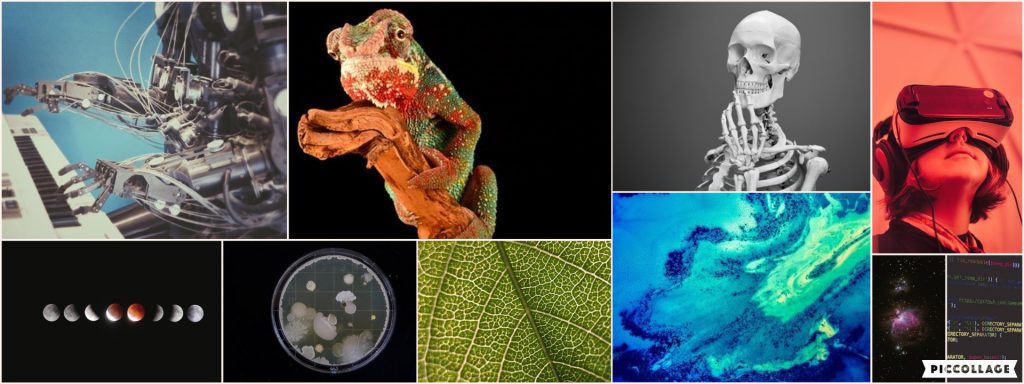Over the last year, I have presented my scientific findings to a wide range of audiences from school children to people passing by on the streets of Berlin. Thanks to programs like Soapbox Science, Skype a Scientist and Letters to a Pre-Scientist, I’ve been able to hone my scientific communication skills. I have written about my individual experiences with these projects here and here. This blog post is my attempt at explaining what makes good Scientific Communication (SciComm) and how to make this task a wee bit easier.

Like any skill, SciComm can only be learnt by practice. Unlike other skills, it is easier to practice. You can start anywhere – with your family, friends, dinner party conversations, hobby groups, or simply people on the street. Most of us have had many such interactions, but even after all this practice, some of us in academia, me included, get stressed at the thought of answering ‘so what do you do?’.
This is a difficult question because the answer is not a job description, but a project description. Being a researcher is different from being a medical practitioner or a lawyer. In the latter, people know what you do and when they need you. These are services with clear, defined outputs. When a doctor is asked what they do, they can simply say ‘I am a doctor’. They do not proceed to explain what their patients are suffering from or the details of their scheduled surgeries. It does not suffice for a researcher to say ‘I do research’. This declaration will most likely be followed up with a segment explaining the very complicated research question and methodologies. This is one aspect of SciComm – Complexity of what you are communicating.
There is another parameter as well – Interest. If the lawyer at the above party told you about every affidavit they had to file, they wouldn’t have much of an audience. A high-profile murder case, however, would grip everyone’s attention. Most jobs, including research, are not interesting to hear about, even though they are extremely important to society.
As researchers, we realize soon enough that people are not automatically interested in the topics we are passionate about. What we forget, is that love, admiration and passion are contagious. We also realize that everyone has a different niveau of understanding the topic we are an expert in. We forget however, that every deeper level of understanding is built on something more basic and can be used as stepping stones.
When communicating science, it is important to keep these things in mind. You need to communicate in a 2-D space of complexity and interest.
First, have a bag full of interesting things about your research. An easy way to find this is to ask yourself – What were you first excited about? For me and my PhD project, it was the method – eye-tracking. I still remember how I played around with my devices when they first got delivered. How impressed I was at their accuracy and how visual they made cognitive processes.
Second, find what about your research project could interest others. What has been in the news? What part of it would they understand? This has gotten easier for me because of the clinical groups I work with. The Autism community is fighting to be heard and represented; and diagnosis and medication for Attention-Deficit/Hyperactivity Disorder (ADHD) is discussed often in the news.
Once you have the interest arousing and familiar aspects of your research, its time to come up with thresholds of understanding. The first threshold is your starting point. In my case, the disorders I work with. If people have never heard of neurodevelopmental disorders, that’s where I have to start. If people already know what these are, I can move on to explaining how I study them. If interest persists, I move on to the next threshold, what it is I am studying with these participants. If this is responded to as well, I can then bring out the big guns of endophenotypes, the diagnostic processes, and why these disorders need to be studied together. Your thresholds may be different, may change over time, for different audiences or conversation.
It is important to have a bottom up approach, and increasing information step-by-step. It is also possible that the ‘interesting’ or ‘media-related’ bit of your research sparks most curiosity, such that, you never get to saying what you do, but you’ve still had a good conversation about an important and relevant topic, probably cleared some misconceptions and given them some fun facts about what research entails.
These guidelines will help most situations, where you can have a conversation – like in letters to a pre-scientist or Skype-a-scientist or at a booth. However, platforms like Soapbox Science expect you to prepare at least a part of your interaction beforehand. In these cases, one more point becomes imperative – what is something you absolutely want to convey? This can not be the same as what you convey at a conference, and doesn’t have to be the same for all audiences. For soapbox science, for instance, the audience is varied. So here, it helps to have a single message. I wanted this to be the concept of intra-subject variability. Therefore, I designed games and props to convey just one take home message – the fact that all of us are variable and some of us so much more variable that it can be used as a cognitive marker.
Each SciComm activity needs to be tailored. Human interaction can never have a one-method-fits-all solution. Looking at as smaller informational pieces to convey, keeping some thresholds and interesting anchors in mind can make this activity a lot easier. Be clear about what you are communicating and work in the complexity-interest space. You need not convey all your knowledge, but whatever you do, make it count.